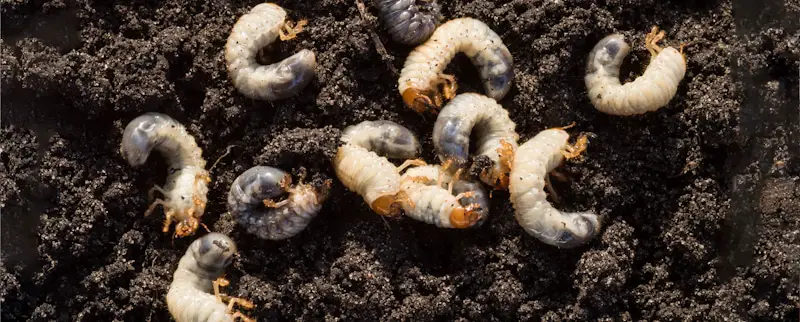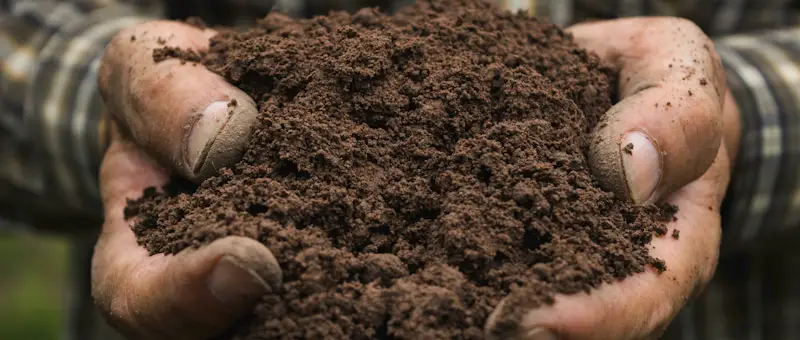Gardening is a popular hobby for those who are fond of nature. However, as fascinating as it may be, the activity requires consistent maintenance and effort. Apart from the long hours of dedicated work that plants need to thrive, there is one thing that gardeners dread even more, pests. Even the most vigilant and careful gardeners may encounter this problem. Tiny white bugs crawling in the soil is an alarming sign of infestation, but don’t worry, read the article for a solution.
These tiny white bugs can be removed by chemically composed pesticides or with natural remedies such as insecticidal soap or neem oil. The easiest way is to remove the old infected soil and relocate your plant to fresh compost. Make sure to take preventive measures, such as regular cleaning, to prevent future infestations.
So, let’s get find out:

What Are These Tiny White Bugs?
Many different species come under the category of ‘tiny white bugs.’ One type of bug is a springtail; it thrives in moist conditions and can even spread to other parts of your home, such as carpets. If you notice cotton-like secretion on your plants, then your soil is undoubtedly affected by a mealybug; common problems it poses are stunted growth and limp plants.
Mostly, these tiny white bugs are soil mites. While they may be unharmful, they reproduce very quickly and create a very unpleasant site, which may be an issue.
What Causes The Tiny White Bugs That Live In The Soil?
Soils rich in moisture are also home to many bacteria; this bacteria is a perfect source of nutrients for tiny white bugs; hence, moisture-rich soils attract these white bugs.
Overwatering your plants also leaves them prone to diseases and infestations. Hence, you should only water your plants when necessary.
It is also likely that these bugs could’ve been in the soil at the time of purchase; hence, you should buy compost from reputed sources.
Can You Prevent Small White Bug Infestations From Occurring?
You can adapt several methods to prevent white bugs from infesting your garden.
You can avoid insects by clearing the soil of any fallen leaves and flowers. Tiny white insects are more drawn to plants that can serve a reliable food supply and frequently feed on plant detritus. Keeping your garden free of decaying organic materials is the most significant way to stop or eliminate soil mites. Since dead plants, branches, and old clippings are the primary source of food for these mites, removing them away will help keep them at bay.
Soil mites are probably a problem if you compost at home. However, keeping the soil mite population under control and preventing it from taking over your entire garden is possible with a specialized, covered compost container.
The waterlogged soil that results from overwatering your lawn and garden destroys plants, increases the amount of decomposing plant debris in your garden, and attracts white bugs. We advise you to water only when the top layer of your soil is dry and to try to improve the drainage of your garden by aerating the garden, lowering the amount of clay in your plants, or incorporating a rain garden.
You can also add regulated and scheduled use of insecticides in your gardening regimen to prevent such problems from festering. While chemically induced pesticides are highly effective, you can also resort to eco-friendly methods by using natural remedies for pest control.
Maintaining your lawn is the key. Regular grass mowing and aeration reduce the shade, moisture, and decomposing organic matter that fall into the soil underneath, making it less inviting to soil mites.
We would also advise making a routine for regularly inspecting all of your plants for pest activity. Only a small quantity of soil needs to be pushed back to examine your plant because most insects can be found in the top few inches of soil. If you find any traces of these white bugs, take immediate notice to prevent them from reproducing and taking over your entire garden.
How To Get Rid Of White Bugs:
Here’s a few methods for that:
Refreshing Plant’s Soil:
One of the easiest ways to get rid of bugs is to clean your soil or replace the soil. The soil can be cleaned by passing through the filter, which removes food sources for the insects. However, changing the soil is ideally the best solution if you have a severe infestation.
Carefully remove the plant from the pot, then sift the dirt to eliminate any food sources, trash, or parts of dead plants. Put the sifted soil back into the plant’s container for repotting, covering all roots. After repotting the plant, please give it a good soak. Remove the plant from the pot and throw away all of the old soil if you decide to refill the soil. To remove any remaining dirt, gently stream water over the plant’s roots and the container. Put the plant in a pot with new, clean soil and give it some water to help it grow. Always use brand-new, fresh potting soil when repotting a plant because it won’t have any soil mites.
If you use potting soil, you risk accidentally infesting your plants with soil mites because they may readily enter open bags of potting soil and lay many eggs there.
Killing With Insecticide And Pesticide:
To ensure that any leftover bugs do not survive and grow into an infestation, treat the dirt with insecticides to kill soil mites after sifting it to remove any dead plants and decaying matter.
For the best outcomes, pick pesticides that include the chemical pyrethrin. Spray the soil and plants as directed after mixing the pesticide with water according to the manufacturer’s recommendations.
Use Of Organic Insecticide (Neem Oil):
Neem oil is the solution if you choose to stop a soil mite infestation using natural and organic substances. The neem tree’s seeds yield this oil, a naturally occurring pesticide that works wonders on various insects. Combine the Neem oil, soap, and water in a container. Pour enough liquid around the plant’s base for the soil to get saturated. Until the pest issue is resolved, replace weekly watering with this soil drench. You could also use Neem oil to get rid of various insects as well if they infest your plants.
Use Of Cinnamon Mixture:
Another organic mixture to kill the white bugs is the cinnamon mixture. It works tremendously well in killing the bugs and does not harm the plant at all. It also has a pleasant aroma.
Fill a container with water and add cinnamon, and you should shake until all the cinnamon is dissolved in the water. If your plant has a severe infestation, then consider adding dishwater soap to boost the results. Spray the cinnamon solution on the bottom of the plant so that the top layer of the soil is drenched in the solution. Spray this solution on all your infected plants and repeat until the infestation is cured.
Treating The Soil With Hydrogen Peroxide:
Bugs in potting soil are the worst, especially for flowers and other houseplants. Fortunately, utilizing hydrogen peroxide to eliminate bugs in houseplant soil is not difficult.
Pour the water and hydrogen peroxide into a bottle and thoroughly stir it before using it on plants. To soak the soil, pour the liquid into the plant’s pot.
If it starts bubbling, don’t panic. This is a usual reaction that passes quickly. Until the pests are gone, repeat this method once per week or two.

Spray The Soil With A Garlic-Based Mixture:
The garlic cloves should soak for at least four days in a big container that has been filled with water. Pour the mixture into a sizable spray bottle after stirring it.
Spray the garlic water over the surface of the soil near the plants to soak it in, which will naturally kill white bugs and get rid of soil mites. Repeat as necessary to ward off soil mites.
Soil mites and their larvae do not harm plants, in contrast to mealybugs and other garden pests. To get rid of mites in and around your home since they are dangerous to people, adopt the right pest control methods.
Final Words
We hope you found this article helpful in treating the white bug infestation that endangered your favorite plant. There are multiple ways to treat the infestation given above; any one is enough to get rid of the white bugs.
Victoria is the owner and main author of hobby plants. She loves spending her free time in her garden planting and taking care of her plants. Victoria hopes you enjoy the content here!
![Snow White Waffle Plant: [Complete Care Guide] Snow White Waffle Plant: [Complete Care Guide]](https://www.hobbyplants.com/wp-content/uploads/2022/08/snow-white-waffle-plant-300x158.jpg)
![Best Soil For A Money Tree? [DIFFERENCES EXPLAINED] Best Soil For A Money Tree? [DIFFERENCES EXPLAINED]](https://www.hobbyplants.com/wp-content/uploads/2022/08/best-soil-for-money-tree-300x158.jpg)
![How Big Do Different Types Of Azaleas Get? [Find Out Here] How Big Do Different Types Of Azaleas Get? [Find Out Here]](https://www.hobbyplants.com/wp-content/uploads/2022/09/how-big-do-azaleas-get-300x158.jpg)